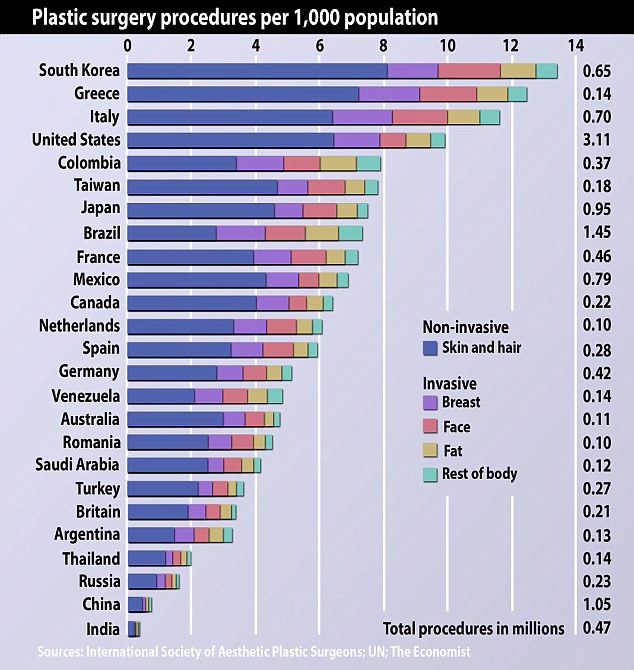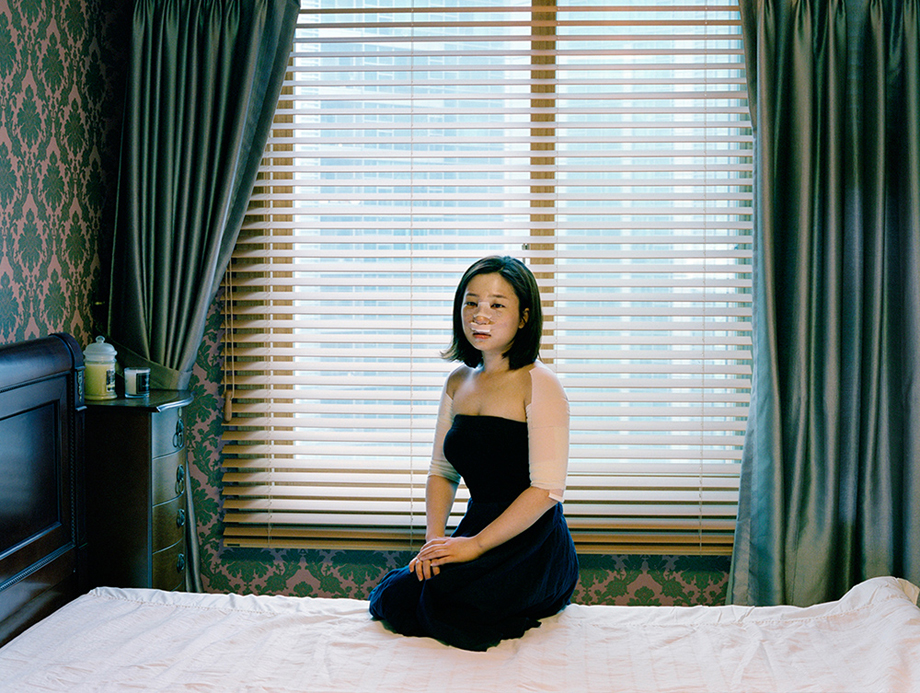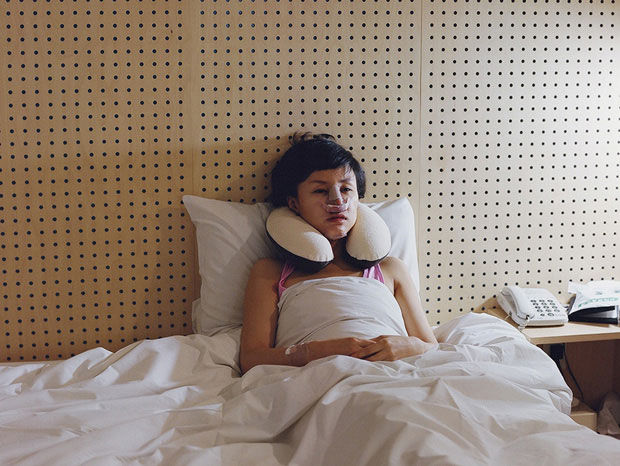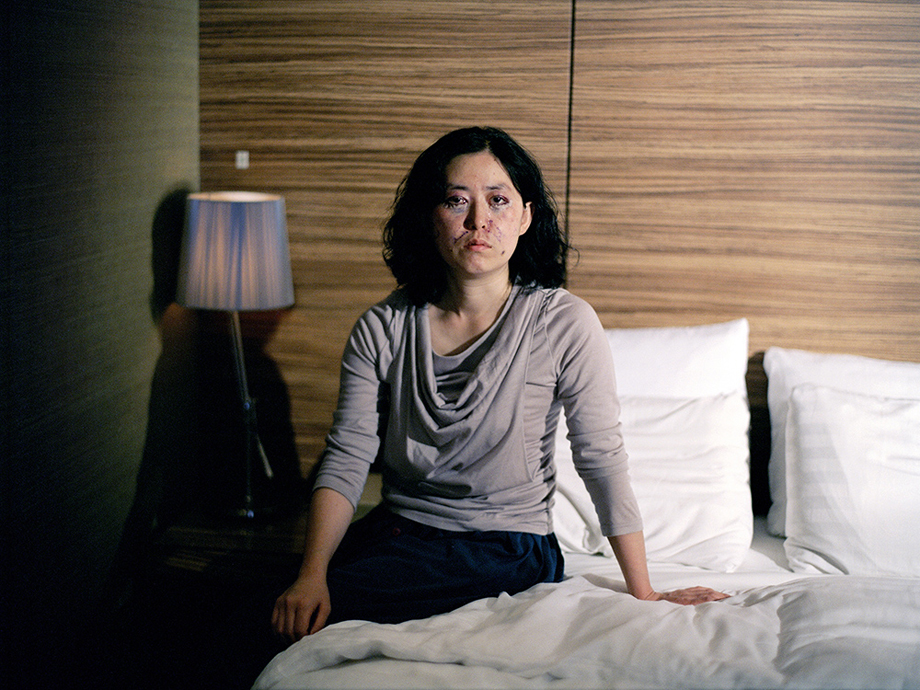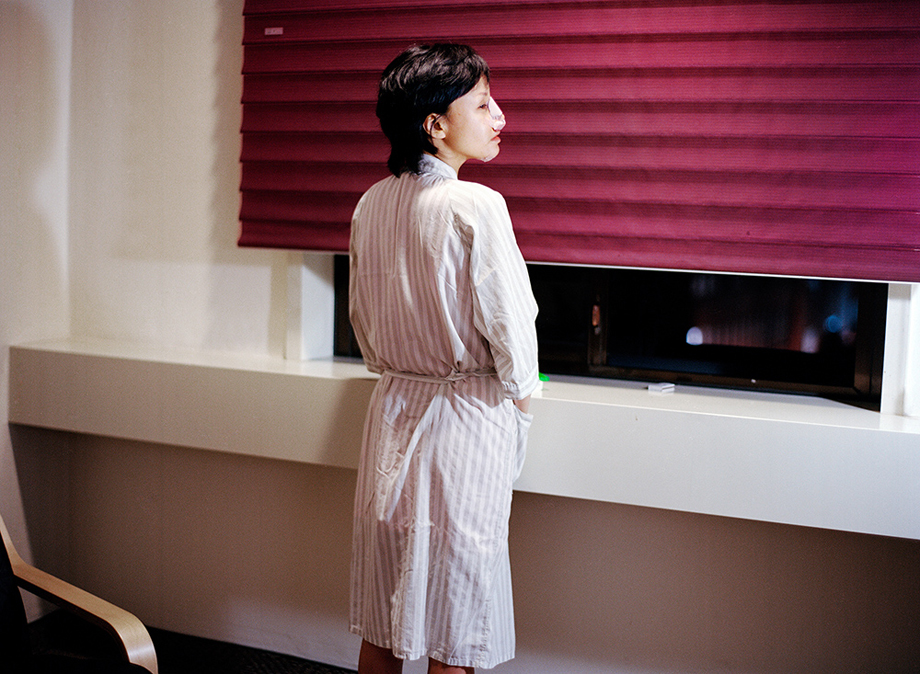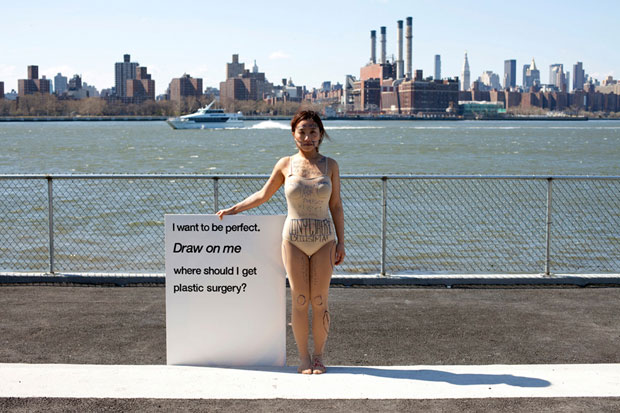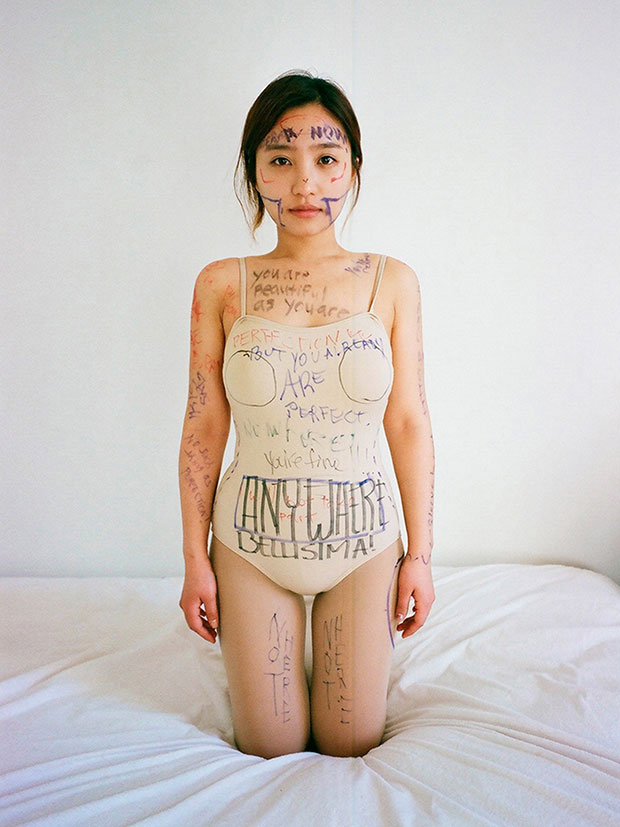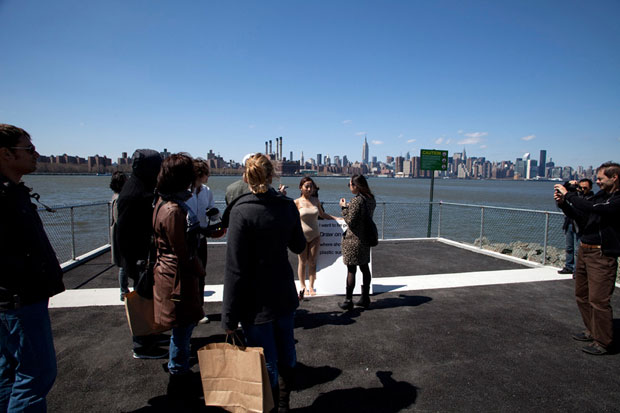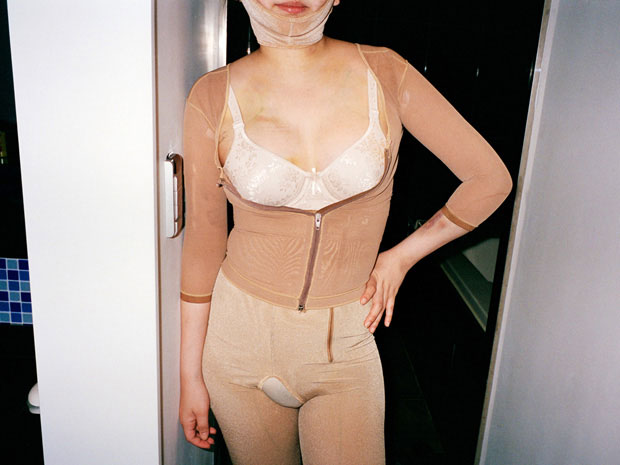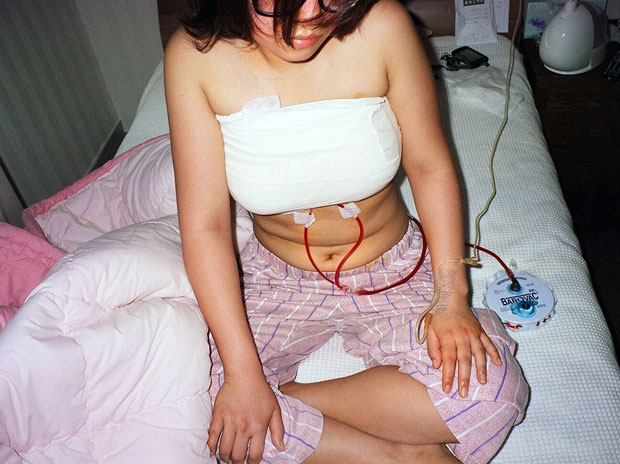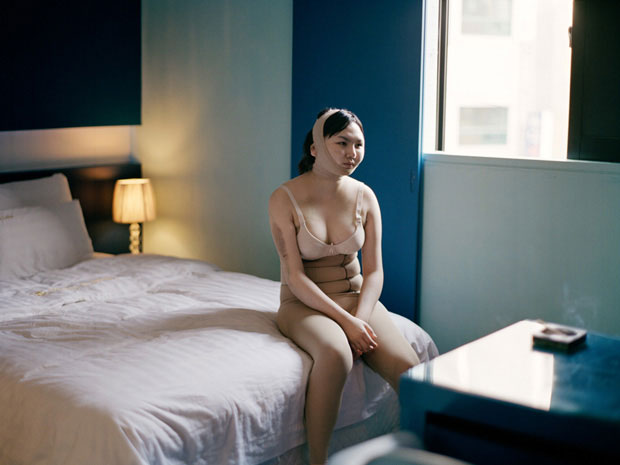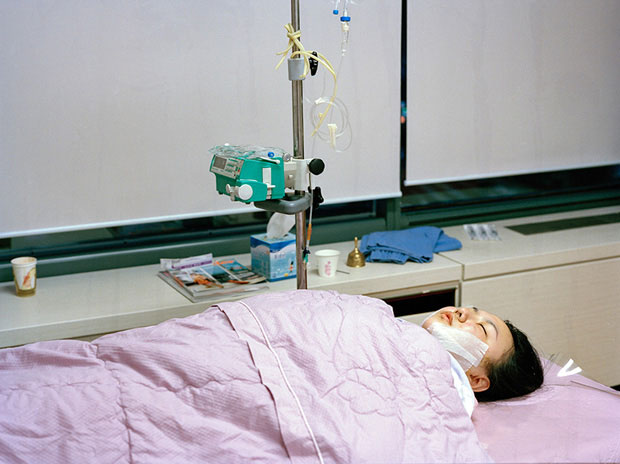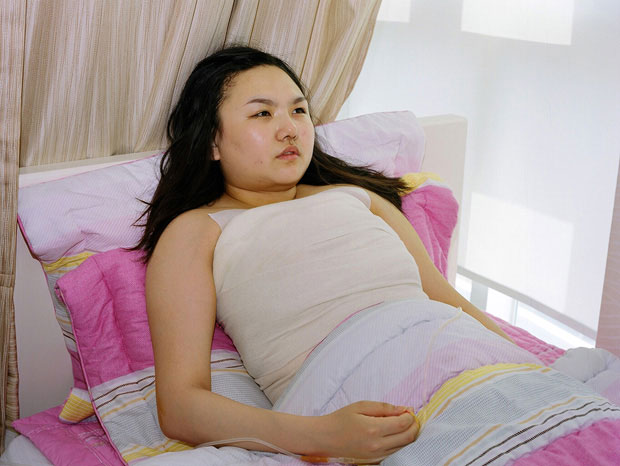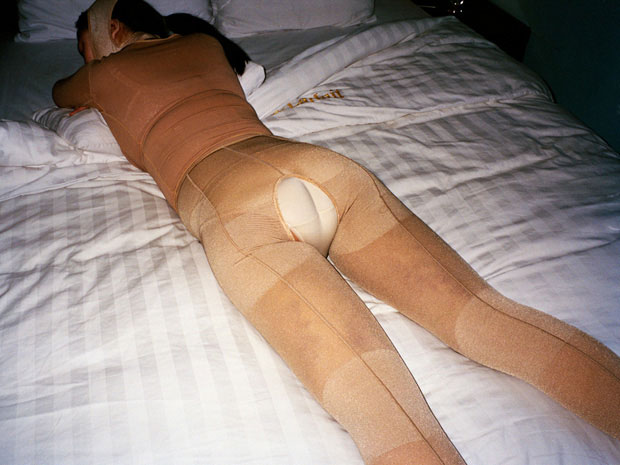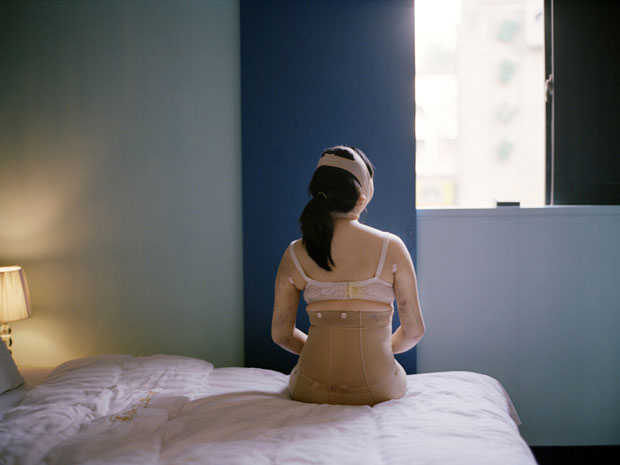[PHOTOS] Exploring Korea's Obsession Through Portraits Of Plastic Surgery Patients [NSFW]
The pursuit of beauty can be an ugly game -- especially when you're talking about the hours and days following a plastic surgery procedure.
The latest raw data compiled from the International Society of Aesthetic Plastic Surgery in 2010, confirms that South Korea is indeed the country with the world’s highest per capita rate of cosmetic plastic surgery
So, when Korean photographer Ji Yeo moved to America she noticed a stark difference in the approaches Eastern and Western cultures take toward plastic surgery
"Back home," she notices, "is a culture where men are judged on their financial balance sheet and women by their beauty. The male-dominated media endlessly reinforces its model of the ideal woman."
"As a result of these cultural forces Korea has become a beauty-oriented society where people are judged more for their appearance than their character. The combination of these factors has dramatically increased the burgeoning plastic surgery industry while creating another set of standards for women to adhere to."
Her series, entitled Beauty Recovery Room, shows the painful lengths South Korean women will go to achieve what they view as aesthetic perfection
Yeo managed to track down women who went under the knife and who were willing to sit for her series of portraits titled “Beauty Recovery Room.”
slate.comEven more remarkable, Yeo isn’t interested in photographing the women in their new, enhanced state but rather immediately after their procedures, capturing the gory site of the women during recovery.
Speaking about her project, she says:
“The idea of recording the moment when they look their worst: showing their bloodstained bandages, bruises, surgical guideline marks, and swollen body is not part of the fantasy of transformation.”
slate.comTo explore her native country's obsession with plastic surgery, Yeo approached Korean women post-operation and offered to care for them in exchange for a portrait
In order to convince the women to work with her, Yeo found subjects who didn’t have support from friends or family and made a deal with them: She would take care of them during the isolating, painful, and sometimes shameful period of transformation. In return, they would sit for a portrait.
Yeo would drive them to surgery, pick them up and take them home, cook soup for them, and pick up drugs from the pharmacy for them; she was both a servant and a confidant.
slate.comAlthough she was surprised how devoid of fear many of the women were about going under the knife, she was equally shocked to see how pleased they were immediately after the surgeries
"I was shocked how casual plastic surgery was for them and how much it seemed to provide them pleasure and satisfaction. During the photo shoots, and even though they were in extreme pain, I could feel their excitement; the excitement of hopes realized," she said.
dailymail.co.uk“They seemed not to have the fears that I had; in fact, most of them were planning other surgeries in the near future.”
slate.comIn her artist statement for the series, Yeo claims her photographs use:
"The wounded faces and bodies of women who have recently undergone plastic surgery to show the physical cost of adhering to social pressure in Korea."
"The Beauty Recovery Room" draws upon the impossibility of perfection and critiques Korean culture for its upholding of a society driven by beauty rather than worth.
In addition to the photographs taken during the Beauty Recovery Room project, Yeo created a performance piece in which she stood in a nude unitard holding a sign that read:
"I want to be perfect. Draw on me. Where should I get plastic surgery?"
For “Beauty Recovery Room” Yeo concentrated on women in South Korea, though she studied at the International Center of Photography in New York and now lives in the United States
She noticed that in Korea most women focused on their faces as opposed to American women who seem to work on their bodies as well. The women in Korea were looking to create bigger and wider eyes in an attempt to appear more like Caucasian women while also keeping a childlike appearance that in Korea is tied to both femininity and innocence.
slate.com“This difference illuminates the fact that women across cultures are altering their form in various ways to respond to a patriarchal media that perpetuates specific but distinct ideas of what a woman should be,” she wrote.
That idea is a driving force behind Yeo’s work, and she said “Beauty Recovery Room” is a way for her to “address my own aching questions about beauty and the pursuit of it, in its new and technologically altered form.”
Yeo feels her portraits confront the viewer with a mix of judgment and empathy; she feels what she is photographing shouldn’t exist but knows it won’t disappear.
“Our desire to be loved and valued coupled with our insecurity is far too powerful and far too well-fed to expect a dramatic rebellion …my images are simply a societal and sociological record of a widespread transformation about the lengths we are prepared to go to in order to attain an idea; they are an affirmation, a question, an argument, and a challenge,” she said.
slate.comRaw and honest, these images are difficult to look at yet hard to turn away from, each one revealing the physical cost that many Korean women bear by adhering to social pressures of attaining beauty—specifically, a more Western look
